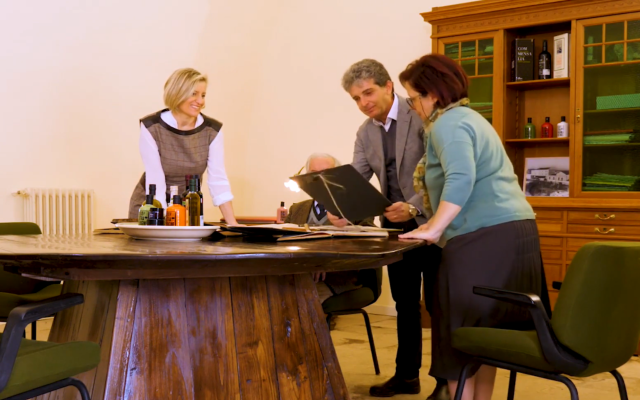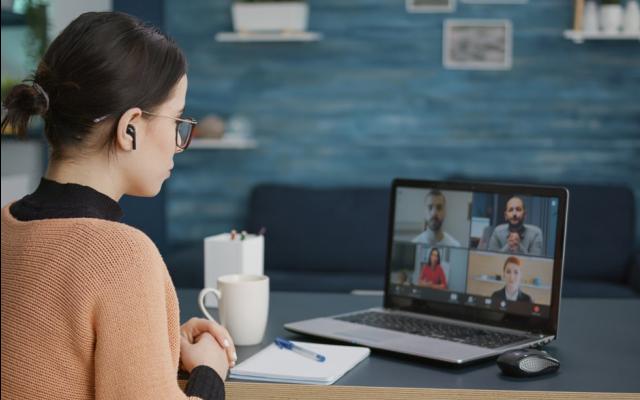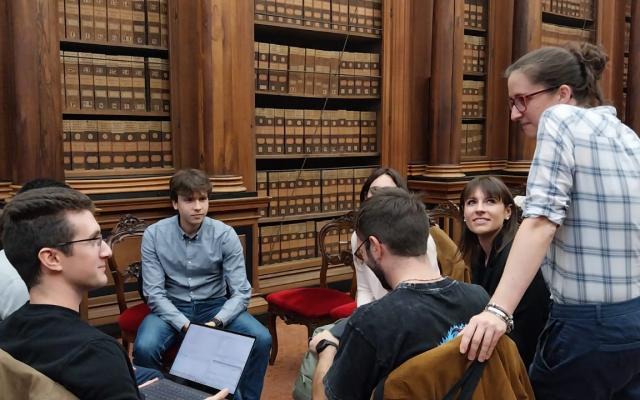Ten short interviews with the finalists of the third edition of the award
After introducing the winner, Clemente Lauretti [see the news item Precision surgery], we now take a closer look at the other young talents selected as finalists for the third edition of the Most Promising Researcher in Robotics and Artificial Intelligence award, promoted by the Fondazione Mondo Digitale together with the Università Campus Bio-Medico di Roma and the Università degli Studi Roma Tre, as part of the RomeCup 2025.
These are researchers under the age of 35 who are already making their mark in European research, combining vision, expertise and social impact. Let's find out who they are by sharing the short video testimonials they left us on the evening dedicated to them (Rome, 8 May 2025, Sala Esedra dei Musei Capitolini).
- Veronica Bartolucci, 32 years old (Marche Polytechnic University)
Her research focuses on the coordination of swarms of robot fish for underwater exploration, developing mathematical models for environmental monitoring and marine patrols. Veronica combines autonomous robotics and artificial intelligence with a strong focus on sustainability.
‘I found the evening very engaging: it was wonderful to discuss such different approaches and research topics.’ - Pietro Bilancia, 32 (University of Modena and Reggio Emilia)
He works on collaborative robotics for Industry 4.0, designing intelligent mechanical components and machine learning tools to optimise the precision of industrial robots, with the aim of reducing costs and improving safety in the factories of the future.
‘It was inspiring to connect with other young researchers who approach robotics from different perspectives.’ - Valentina Cesari, 34 (IMT Alti Studi Lucca, University of Pisa)
Her field of research, ‘Cyborg. Embodiment and sensory substitution in teleoperation,’ studies how to improve human-robot interaction in critical teleoperation contexts, such as surgery or the use of drones, combining cognitive neuroscience and artificial intelligence.
‘A valuable opportunity to share and broaden the horizons of our research.’ - Valerio Guarrasi, 29 (Campus Bio-Medico University of Rome)
He focuses on creating a ‘Virtual Scanner for generating medical images with AI,’ producing high-fidelity synthetic radiological images to democratise access to advanced medical imaging, reducing costs and time in early diagnosis.
‘An inspiring event, full of super interesting projects and possible future collaborations.’ - Vittoria Laghi,, 33 (University of Bologna)
Her project, “Lattice. Metal 3D printing for sustainable construction”, experiments with the use of 3D printing and artificial intelligence to optimise materials and geometries in construction, bringing innovation and sustainability to the building industry.
‘I was struck by the variety of projects on display: it was enriching to learn about fields so different from my own.’ - Pietro Mascagni, 34 (Catholic University of the Sacred Heart, Gemelli Polyclinic)
His work on ‘AI in surgery: error prevention’ aims to develop a digital co-pilot for minimally invasive surgery, capable of supporting the surgeon in real time, improving safety and training.
‘We build algorithms that support the surgeon during surgery, like a GPS for the operating theatre.’ - Simone Mentasti, 33 (Milan Polytechnic)
He is working on ‘ADAS for safe urban mobility,’ an intelligent system to protect pedestrians and cyclists at city crossings, integrating deep learning and distributed urban sensors.
‘It was important to be able to present my work to colleagues and researchers: a valuable opportunity.’ - Christian Tamantini, 31 (CNR, Institute of Cognitive Sciences and Technologies)
He designs “Intelligent robotics for personalised rehabilitation”, developing robotic systems capable of dynamically adapting to the patient's physiological state to make rehabilitation more effective and tailored.
‘We researchers live to share what we do. I am happy and excited to have participated.’ - Selene Tomassini, 32 (University of Trento)
Her project, “Automatic reporting for emergency brain CT scans”, aims to develop an open-source AI system to automatically generate radiology reports in the emergency room, improving the timeliness and accuracy of neurological diagnoses.
‘I felt truly honoured: it was a stimulating and truly rewarding experience.’ - Konstantinos Zormpas-Petridis, 34 (Agostino Gemelli University Hospital Foundation IRCCS)
He applies deep learning and radiomic analysis to “MRI acceleration and virtual biopsies”, with the aim of reducing MRI times and replacing invasive examinations, promoting faster and more accessible medicine.
‘A multidisciplinary approach to making medicine faster, more accurate and more accessible.’
The diversity and high level of research presented by the finalists, ranging from healthcare to industrial robotics, environmental sustainability to social innovation, demonstrate the vitality of the Italian research landscape and its potential global impact. With an average age of 29, the youngest being 24, and 58% of participants motivated by the social impact of their work, these young innovators represent the future of robotics and artificial intelligence.




